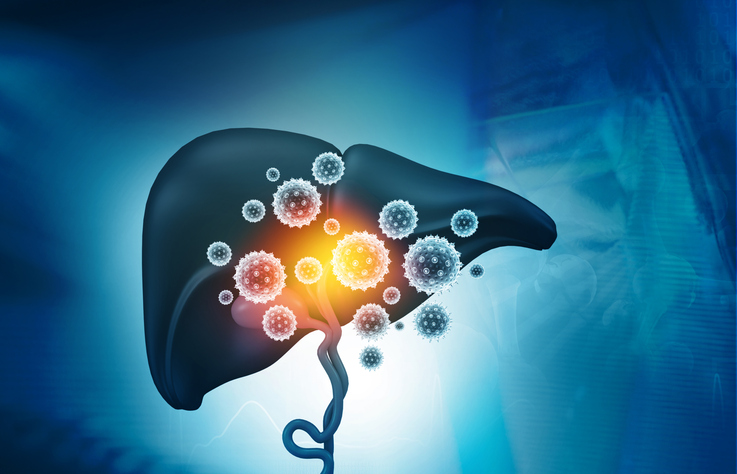Adeno-associated virus2 plus coinfecting adenoviruses and possibly HHV-6 revealed as causes.
Not long after the start of the COVID-19 pandemic, reports emerged from around the world of over 2,000 cases of a severe form of hepatitis in young children. Alanine transaminase (ALT) and aspartate aminotransferase (AST) levels averaged in the thousands and some children required liver transplantation. The condition was not caused by any of the known hepatitis viruses.
It was tempting to conclude that SARS-CoV-2 might be responsible, since it can infect the liver. However, laboratories around the world began a systematic search for multiple possible viruses. Three reports in Nature report that the primary causal agent may be adeno-associated virus type 2 (AAV2), a parvovirus that requires the presence of adenoviruses or herpesviruses to become pathogenic.
The first group of investigators (Servellita, et al., below) used PCR, viral enrichment-based sequencing and agnostic metagenomic sequencing. Whole blood or plasma samples from 13 of 14 children (93%) revealed AAV2. In contrast, the virus was found in only 3.5% of 113 specimens from several control groups: patients with other types of acute hepatitis, patients without acute hepatitis, patients with just gastroenteritis, and blood donors.
The AAV2 genomes recovered all came from a distinct subclade in which there were specific base pair substitutions located in the regions of two capsid proteins involved in binding to the virus’s cellular receptor.
In all 14 of the cases, coinfection with human adenovirus type 2 (HAdV-2) also was detected; no other human adenoviruses were detected. Neither AAV2 nor HAdV-2 were detected in any of the controls with hepatitis caused by hepatitis viruses A-E.
As for herpesvirus coinfection, DNA from EBV and HHV-6 was detected in the blood of 79% and 50% of cases, respectively. In contrast, using the same assay, EBV and HHV-6 DNA was detected in only 1 (0.88%) of the controls. Neither these two herpesviruses nor others were found in liver biopsy tissue, and their viral loads in blood were relatively low.
The second group of investigators (Morfopoulou, et al.) compared 38 cases to 66 age-matched immunocompetent controls and to 21 immunocompromised controls. Like the first group, they also detected high levels of AAV2 DNA in the blood, plasma, liver and stool in 96% of cases, but only infrequently in the comparison groups—even the immunocompromised group. In contrast to the first report, the phylogenetic studies in this second report did not identify the AAV2 viruses as being a novel strain. They did not find AAV2 or HAdV proteins in liver.
The abundant AAV2 DNA found in the liver was “concatenated with many complex and abnormal configurations” such as can occur with AAV2 infection alone or in AAV2 infection mediated by HHV-6B. Indeed, HHV-6B DNA and proteins were identified in the liver of 11 of 12 cases, but not in the controls. Puzzlingly, transcriptomic studies of liver were consistent with active replication of AAV2, but immunochemistry and proteomic studies did not find AAV2 proteins.
The tissue damage in liver appeared due to an immune-mediated process: there was an influx of both CD8+ T cells and B cells. In addition, there were high levels of pro-inflammatory cytokines in liver tissue—as high or higher than seen in cases of liver failure from conventional hepatitis viruses.
The third group of investigators (Ho 2023, below) studied fewer cases and controls than the first two groups. AAV2 was found in ballooning hepatocytes in the liver, in all liver biopsy samples. Like the first group of investigators, this group found characteristic variations in the capsid protein genes of the AAV2 sequences. The cases were much more likely to have IgM antibodies against AAV2, indicating likely primary infection with the virus. While this study found HHV-6B DNA in liver in a slightly higher fraction of cases than controls, the study was underpowered to recognize the difference as significant. Finally, these investigators found that 93% of cases, but only 16% of controls, had a characteristic class II HLA allele, HLA-DRB1*04:01,
Thus, these three studies make it highly likely that the combination of three factors lie at the heart of this severe form of viral hepatitis in children: 1) infection with (possibly a specific strain of) AAV2; 2) coinfection with adenoviruses or possibly with EBV or HHV-6; and 3) having a particular class II HLA allele that increases vulnerability.
Whether previously reported cases of acute hepatitis in children associated with EBV and HHV-6 might also have been found to involve AAV2 had this virus been looked for, is unknown. Whether, as suggested by two groups, the AAV2 linked to this illness is a novel strain also remains unproven but quite possible.
Finally, what about SARS-CoV-2? Is it just a coincidence that the sudden appearance of these cases of severe hepatitis in children occurred during the COVID-19 pandemic, since there was little evidence linking SARS-CoV-2 to these cases? Two groups of investigators hypothesize a possible connection between the COVID-19 pandemic and this form of severe hepatitis: perhaps the confinement of these young children during the pandemic prevented their exposure to many common viral pathogens, including circulating adenoviruses and adeno-associated viruses, rendering them more vulnerable to these viruses.
Read the full articles: Servellita 2023; Morfopoulou 2023; Ho 2023

